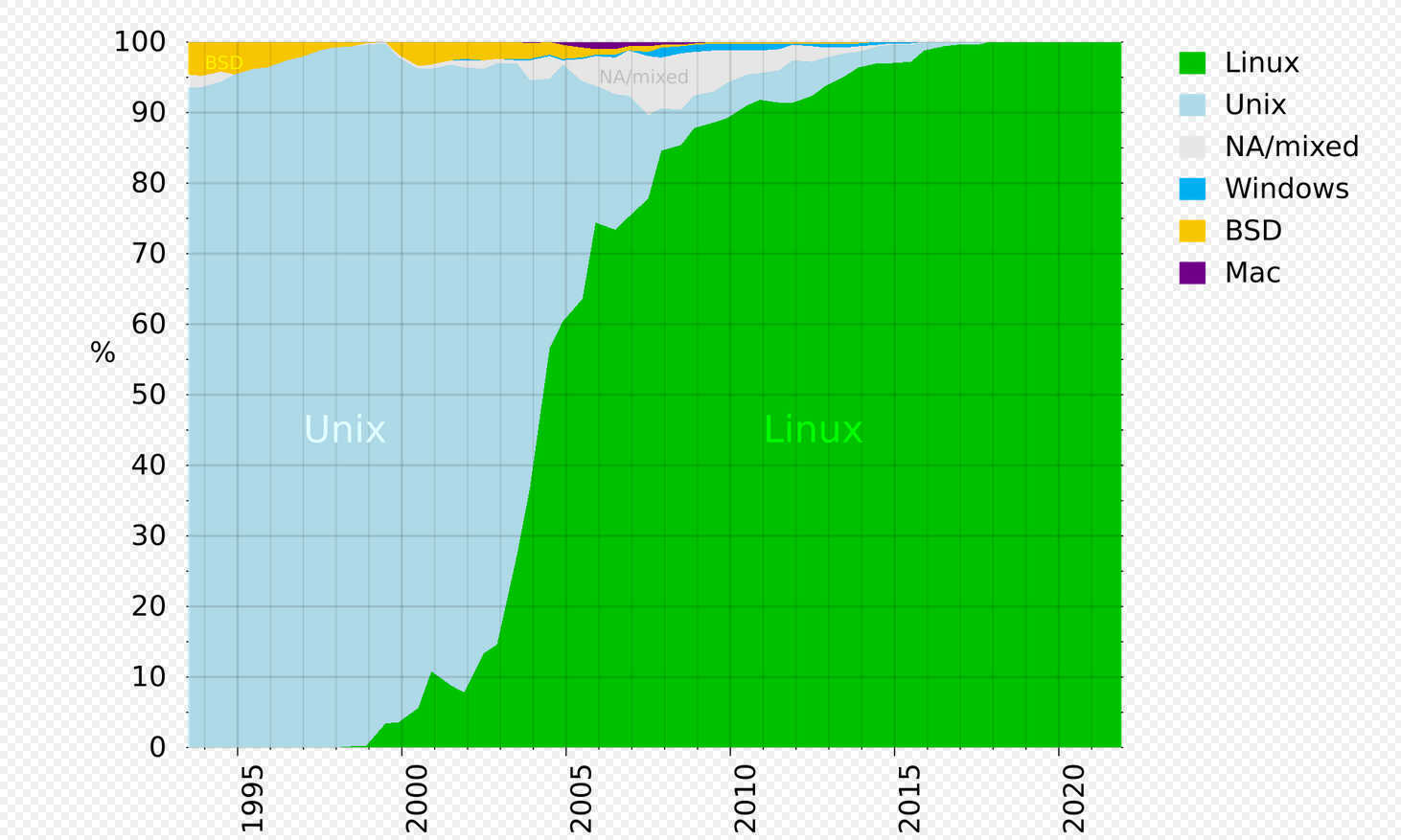this post was submitted on 15 Nov 2024
813 points (99.4% liked)
Linux
48313 readers
779 users here now
From Wikipedia, the free encyclopedia
Linux is a family of open source Unix-like operating systems based on the Linux kernel, an operating system kernel first released on September 17, 1991 by Linus Torvalds. Linux is typically packaged in a Linux distribution (or distro for short).
Distributions include the Linux kernel and supporting system software and libraries, many of which are provided by the GNU Project. Many Linux distributions use the word "Linux" in their name, but the Free Software Foundation uses the name GNU/Linux to emphasize the importance of GNU software, causing some controversy.
Rules
- Posts must be relevant to operating systems running the Linux kernel. GNU/Linux or otherwise.
- No misinformation
- No NSFW content
- No hate speech, bigotry, etc
Related Communities
Community icon by Alpár-Etele Méder, licensed under CC BY 3.0
founded 5 years ago
MODERATORS
you are viewing a single comment's thread
view the rest of the comments
view the rest of the comments

Maybe windows is not used in supercomputers often because unix and linux is more flexiable for the cpus they use(Power9,Sparc,etc)
More importantly, they can't adapt Windows to their (rather unusual) needs.
Yep the other reason.
That's certainly a big part of it. When one needs to buy a metric crap load of CPUs, one tends to shop outside the popular defaults.
Another big reason, historically, is that Supercomputers didn't typically have any kind of non-command-line way to interact with them, and Windows needed it.
Until PowerShell and Windows 8, there were still substantial configuration options in Windows that were 100% managed by graphical packages. They could be changed by direct file edits and registry editing, but it added a lot of risk. All of the "did I make a mistake" tools were graphical and so unavailable from command line.
So any version of Windows stripped down enough to run on any super-computer cluster was going to be missing a lot of features, until around 2006.
Since Linux and Unix started as command line operating systems, both already had plenty fully featured options for Supercomputing.
Plus Linux doesn't limit you in the number of drives, whereas Windows limits you from A to Z. I read it here.
You can mount drives against folders in windows. So while D: is one drive, D:\Logs or D:\Cake can each be a different disk.
What in the world? I don't think I've ever seen that in the wild
It’s common in the server world. KB article on it is here.
For people who haven’t installed Windows before, the default boot drive is G, and the default file system is C
So you only have 25 to work with (everything but G)
Almost, the default boot drive is C:, everything gets mapped after that. So if you have a second HDD at D: and a disk reader at E:, any USBs you plug in would go to F:.
Why do you copy the boot files from C and put them in G during install then?
I don't think anybody does that, honestly.
You can have a helper script do it for you (the gui) but it still happening in the background
The boot files go into C:, not G:.
Windows can't operate if you did that, it doesn't let you.
Copy Boot Files to EFI Copy the boot files to complete the EFI partition to boot into our windows.
bcdboot c:\Windows /s G: /f ALL
Source: https://christitus.com/install-windows-the-arch-linux-way/
Fijn article, thanks for sharing!
Still, I don't get why'd you do that, all my windows installation automatically put boot files onto C: and did not allow me to touch them afterwards.
G: also seems completely arbitrary, and I'm the majority of windowa setups wouldn't exist or be an external drive.
Simple as.
The boot directory on your file system is where the system gets it from to put on G. It’s left there for recovery/repair
But you still have a G partition for the boot. It lets the computer itself have an easier time finding it (think labeled as boot). Your ssd is divided, it’s not a 2nd physical disk
The letter is arbitrary, so is C. It’s just the default
G can be mapped after boot (usually to removable drives)
Ok that would make sense tbh